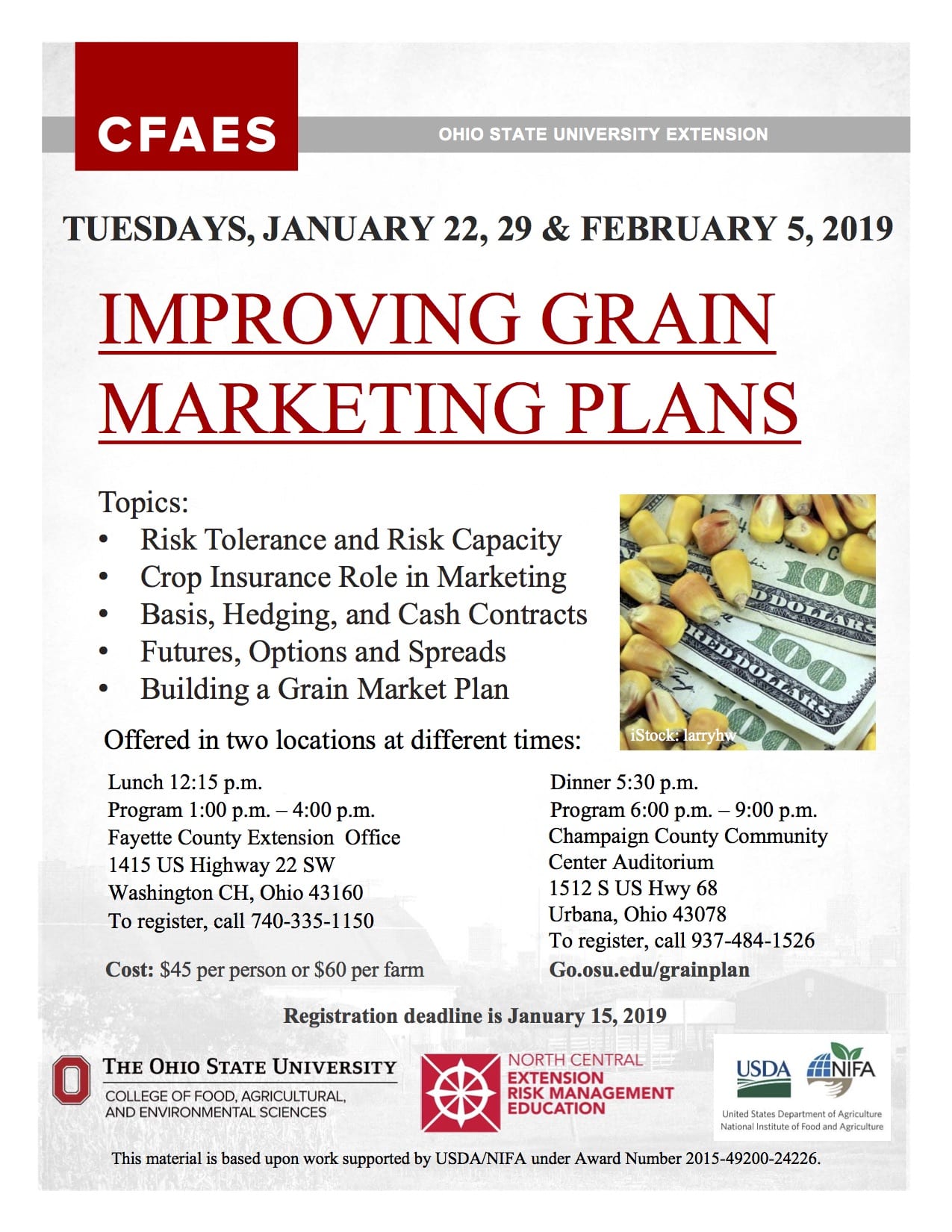By Garth Ruff, ANR Extension Educator, OSU Henry County Extension
With last week’s rain showers leaving much of the area saturated, there were limited opportunities for farming or even yardwork. I took advantage of the soggy conditions here in NW Ohio and headed south on Friday to a fairly productive couple of days in Morgan County. We had a good chance to winterize and store all of the hay equipment and tractors that we typically don’t use during winter time.
Regarding hay implement storage, we make an effort blow off the chaff, seeds, and dust with a leaf blower shortly after use and then pressure wash the piece prior to pulling in to the machinery shed for the down season. Once everything is cleaned off, each machine is greased and gear boxes are checked for fluid levels. Any major repairs or maintenance such as changing mowing knives can be done during the winter months as time allows. Given the unpredictability of the weather the past few years, it is nice to be able to pull the hay equipment out of storage, hook up to a tractor and head directly to the field. This eliminates the need of a full day of maintenance, especially when the hay making window is short.
That was the case for about all of 2018, as it was one lousy season for making dry hay across the state. For those who have to purchase hay this winter there are a few things to consider in terms of hay quality and value. There are some visual and sensory characteristics we can look at, as a gross indication of forage quality. The presence of seed heads (grass forages), flowers or seed pods (legumes), indicate more mature forages. Good-quality legume forages will have a high proportion of leaves, and stems will be less obvious and fine. While we tend to favor bright green forages from a visual perspective, color is not a good indicator of nutrient content, but bright green color does suggest minimal oxidation.
Smell of the forage and moisture content are also valuable indicators in determining hay quality. Good quality hay will have a fresh mowed grass odor; no musty or moldy odors. Dry hay made and stored at less than 15 percent moisture should be at minimal risk for molding.
Visual appraisal of the hay has some limitations, the only sure fire way to determine quality is to look at a forage analysis of the cutting. When looking at a forage sample analysis, perhaps the most valuable figure is the percentage of Total Digestible Nutrients (TDN). The higher the TDN value, the higher the digestibility of the forage, and increased digestibility is directly related to nutrient availability.
Other values that you may find on a forage analysis include Acid Detergent Fiber (ADF), Neutral Detergent Fiber (NDF), Crude Protein, and Relative Feed Value (RFV). When interpreting the forage analysis goals for ADF, NDF, and Crude Protein vary between grass and alfalfa hay, but in general as fiber values increase, forage maturity tends to increase resulting in reduced digestibility for the livestock. A good rule of thumb for quality alfalfa or legume hay is a 40-30-20 analysis for NDF, ADF, and Crude Protein respectively.
I’ll end this week with a quote from Will Rogers: “It’s not what you pay a man, but what he costs you that counts.” Have a great week.

